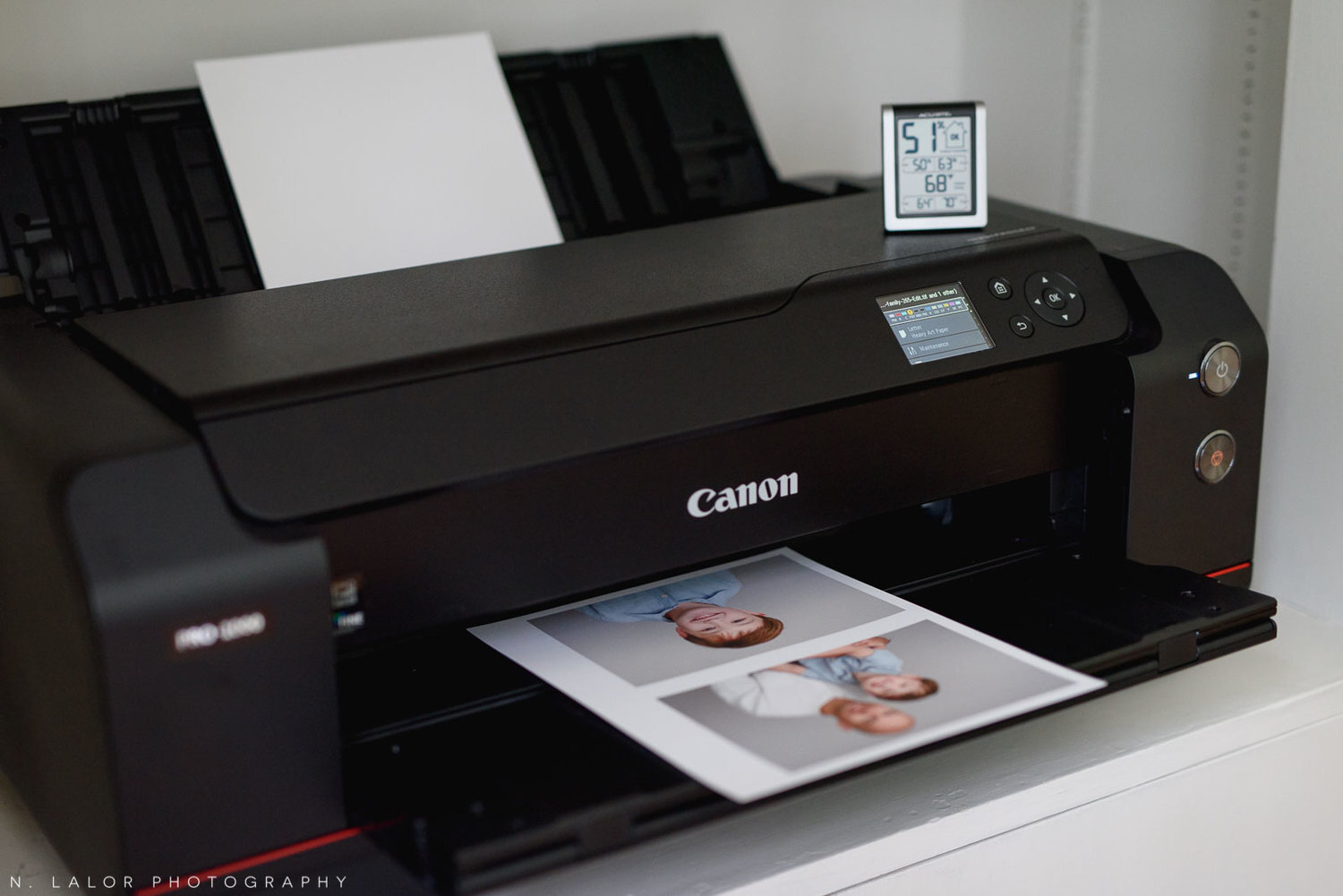What is Archival Printing?
One of the biggest benefits of working with a professional photographer is access to professional-quality archival prints. I won’t go into why you should always get prints from whichever photographer you’re working with (and you absolutely should!). But there is actually a huge difference between professional-quality printing and the consumer printing we’re all used to.
Both types of prints might look the same to start. But archival photographs hold on to inks better, so your prints will look like they did on day one for a much longer period of time. And quality is a sliding scale. It’s not like all consumer prints are bad and all professional prints are incredible. There are plenty of consumer-ready companies that do a great job with quality and some professional printing that doesn’t do as well as it claims.
The most important thing, is knowing the difference - being aware of what to look for, making the smartest decision, and getting the value you deserve.
Archival Printing, What is it?
It has to do with the paper
We are going to start with the most essential part of a printed photograph. The paper. All photo paper should be acid free for archival quality.. but for true museum standard, even that isn’t enough.
Lignin, which is lesser known than acid, is a brown organic substance that binds to cellulose fibers and is often left in wood when making paper to bulk it up. It does quite a bit to chemically affect the paper it's in. If your photo paper doesn't specifically state "lignin-free", then you can assume it has lignin.. which means that in the end, it will degrade not only because of environmental factors (see below), but also because of the materials of the actual photograph itself.
There are many levels of quality when it comes to photo paper, from the stuff they use at your local pharmacy (which often starts degrading within several months) to the paper galleries and artists use (which will look beautiful for 100+ years). The better the quality, the more expensive the materials, and in turn, the paper and the resulting print will cost more.. which is one easy way to tell whether something is archival or not. Are you paying .20 cents for the printed photograph? Or are you paying $2,000? You can pretty easily assume that the $2,000 gallery print was printed on 100% cotton, archival quality paper and the cheaper one was not.
The Process of Printing
Photography started out with a chemical process, but over the years we have moved to printing with dye and pigment inks with printers and not chemicals (picture a dark room with all those smelly trays). One can say that we are evolving the process. Innovating. This not only made printing more accessible to everyone, but also much cheaper and easier. The downside is that quality both improved, and got much, much worse.
While we could expect the old-style prints to last for the next generation without completely falling apart, you can print a photograph really cheaply nowadays that will start fading and yellowing in just a few months. On the opposite side, we have access to inks that are more like what artists used to use for painting (pigment inks!) that can be superior to the old-school emulsion methods. It’s an incredible change that many artists moved to when printing their own photographic work for galleries and museums.. but most consumer print labs don’t offer because of the cost.
And lastly, during printing, the humidity and temperature of the room should be set and controlled to very specific levels in order to make sure everything is printed correctly. White gloves should always be used, because you never want finger oils touching any part of the printed image. Proper handling of prints is important to maintain the archival standard and it’s something that’s easy to overlook.
What about presentation and framing?
When the print is framed, it's incredibly important to make sure everything is acid-free.. because even if you have the best quality printing, that acid from the mat or the frame is going to seep into the photograph and damage it over time. No part of the wood should touch the print (wood is acidic). The glass should not touch the print (it traps humidity and the print will stick to it over time). And the mat should be 100% acid-free and hopefully high quality, so it doesn't turn yellow/brown over the years (which doesn't take long, by the way). UV-resistant glass or acrylic will shield your prints from sunlight, which is something to consider as well.
These three things combined, the paper, ink, and presentation, make a print archival quality. Skimp on any one of those steps, and you’ve potentially compromised the longevity of the image. Working with a professional photographer sometimes isn’t enough, either. You really have to look for someone who understands the importance of printing and knows the details of archival standards.
But why should it matter? Why do you need archival-quality prints at all? Isn’t it a lot easier to just go to Walgreens and print out a bunch of 4x6” prints instantaneously? Yes, it is easier. It’s super convenient. And having those prints is definitely better than having none at all. But if you want those images to last. To be there in 30 or 40 years, you really have to think about the fact that colors and inks will fade. Those beautiful skin tones will turn green. Whites will yellow. And the prints that look pretty good today really won’t last when your kids start being interested in them. And if you’re hiring a professional for your family portraits, you probably want those photographs to worth the money you paid for them.



